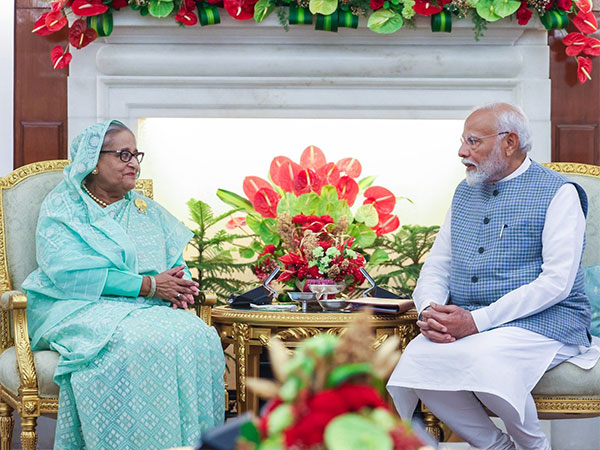
New Delhi: India and Bangladesh share a strong bond based on their common history, language, and culture. This relationship goes beyond just strategic cooperation; it’s rooted in equality, trust, and understanding.
Prime Minister Sheikh Hasina’s visit to India (21-22 June 2024) is a much-discussed event in the political and economic arena of Bangladesh. This is the second visit of the Bangladesh Prime Minister after Narendra Modi formed the government for the third time.
The two countries discussed a number of issues, including easing of Indian visa, sharing of waters of all common rivers, including Teesta, and signing of a number of MoUs. During the visit, seven Memorandums of Understanding (MoUs) were signed which will further enhance cooperation in different fields between the two countries.
When it comes to trade, Bangladesh is India’s biggest trading partner in the subcontinent. In return, India is the second-largest export partner for Bangladesh, making up 12% of its total exports. In the fiscal year 2023, the total trade turnover between the two countries reached an impressive $14.22 billion. This economic collaboration highlights the deep connection and interdependence between India and Bangladesh, showcasing a partnership that extends beyond political ties.
Most Bangladeshi products have easy access to Indian markets although this is for now diluted by the difficulty in penetrating the vast but highly competitive Indian market. Indian goods are transshipped through Bangladesh to connect its eastern region with its far-eastern region using Bangladeshi transportation, literally a quid pro quo.
Connectivity has emerged as the key ingredient of strong India-Bangladesh relations. However, such connectivity was not limited to waterways, roads, and railways, which were particularly prominent in the pre-1947 era; it now included energy and digital connectivity.
Looking at the current state of cooperation between Bangladesh and India and the drive for infrastructural development of both countries, one can see the prospects of connectivity at three levels. Firstly, India’s push for connectivity coincides with Bangladesh’s interest in a more significant relationship with northeast India.
Cross-border buses operate along five different border routes connecting India’s States of Assam, Meghalaya, Tripura, and West Bengal with Bangladesh, and Bangladesh has also undertaken projects with India targeting the northeastern states of the latter, including the Matabari deep seaport.
The seaport is destined to facilitate the exports and imports of northeastern states, with Bangladesh benefiting from the transactions of goods and raw materials. In this context, the Akhaura-Agartala cross-border rail link would play a vital role, as would the Khulna-Mongla port rail line, the agreements of which were signed between the two countries in November 2023.
To counter India’s immense popularity in Bangladesh, China has expressed interest to invest in the Teesta project. This changed stance is a fallout of new geopolitical realities. It is difficult to erase the fact that China aligned with Pakistan, its all-weather friend, and opposed Bangladesh’s independence during the 1971 liberation war. (TimesofOman)
